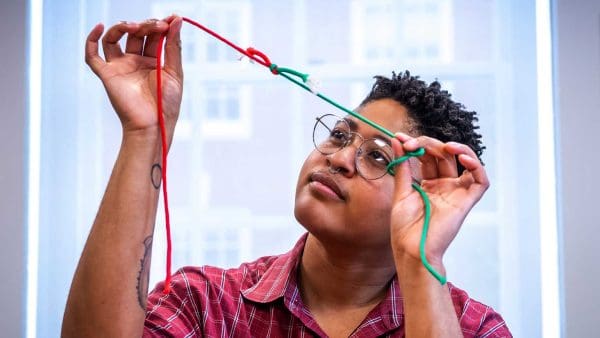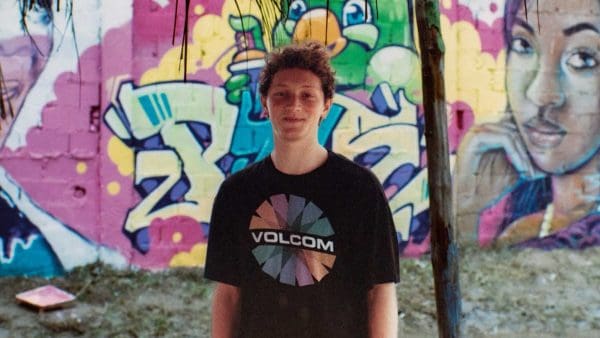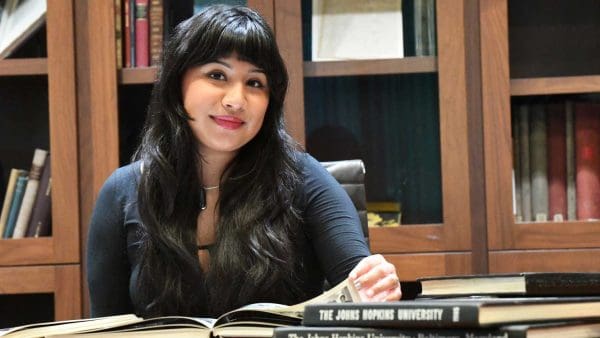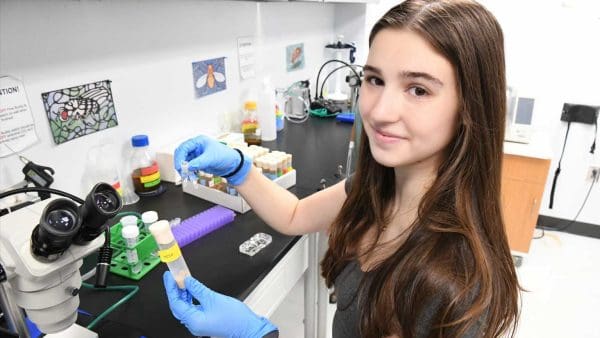
Since 2016, a sophisticated telescope designed and built on the Homewood campus has sat high on a remote desert mountaintop in Chile. It is steadily probing the sky, seeking to pinpoint the cosmic dawn. Well, that’s one of the missions the Cosmology Large Angular Scale Surveyor (CLASS) has as it looks for microwave traces of the events that formed the universe nearly 14 billion years ago: essentially, the beginning of everything.
Sophomore physics major Lucie Afko, whose television growing up was usually tuned to the Science Channel so she could learn about black holes, wormholes, and such, was “very excited” to get involved with the time-crunching project through a Bloomberg Distinguished Professors summer program. “I worked with a team of cosmologists (including Bloomberg Distinguished Professor Charles Bennett and Associate Professor Tobias Marriage) trying to figure out what happened in the first few seconds of the universe,” she says.
She didn’t visit the remote, windswept telescope—actually four separate telescopes made up of multiple detectors tuned to probe specific frequencies—but instead worked remotely to improve one of the detectors. “It’s an upgrade of sorts,” Afko says, “trying to make one of the telescopes more sensitive.”
There are physical chips inside each detector that take in all kinds of electromagnetic radiation—a lot more than is actually needed. The chip, then, needs to dispel the excess energy, and do so without causing interference.
“So, what I was doing was trying to design a chip that will dispel that excess radiation in a controlled way so it’s not just going everywhere and messing up the rest of the detectors,” Afko says. “The bulk of my research was making simulations using fancy software called HFSS [High-Frequency Structure Simulator].”
After about 10 weeks of painstaking trial-and-error modeling, she had the simulations performing as desired and ready for their last set of tests.
“I learned that I asked a lot of questions, which I’m finding out is actually not a bad thing,” Afko says of the project. “I learned some of the ins and outs of working with other people. And I also learned that cosmology is pretty cool. I think it’s giving my love for particle physics a run for its money.”




